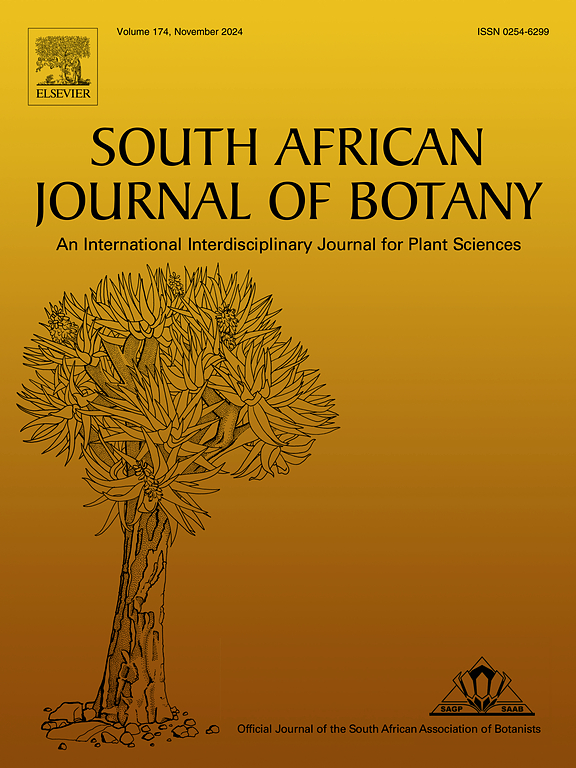阿育吠陀药用植物治疗慢性肾脏疾病的综述
IF 2.7
3区 生物学
Q2 PLANT SCIENCES
引用次数: 0
摘要
慢性肾脏疾病(CKD)是一种进行性疾病,其特征是肾小球滤过率(GFR)持续下降,血清肌酐、尿素和尿酸等肾损伤生物标志物升高,对全球健康构成严重问题。该病的病理生理机制复杂,包括血流动力学改变、肾素-血管紧张素系统(RAS)激活、氧化应激和炎症,所有这些都导致肾小球肥大、硬化和小管间质纤维化。虽然现代治疗的重点是通过昂贵的干预措施(如透析或移植)来控制高血压、糖尿病和终末期肾脏疾病,但这些方法有其局限性。相比之下,传统的阿育吠陀医学通过广泛使用肾保护植物提供了一个有前途的替代方案。诸如贝尼卡(Benicasa hispida)、阴蒂(阴蒂)、总状芦笋(Asparagus racemosus)等植物已显示出调节氧化应激和炎症途径的潜力,从而改善肾脏功能的生物标志物。对这些植物进行的体外和体内模型研究表明,它们可以降低尿酸、血清肌酐和尿素的升高水平,同时减轻MDA等氧化应激标志物,增强抗氧化防御能力。本综述强调了阿育吠陀医学在CKD治疗中的治疗潜力,强调了其作为传统治疗的补充方法的作用,并将其作为一种具有成本效益的整体替代方案。然而,将这些传统做法纳入主流CKD治疗还需要进一步的科学验证。本文章由计算机程序翻译,如有差异,请以英文原文为准。
A comprehensive review on Ayurvedic medicinal plants in the management of chronic kidney disease
Chronic kidney disease (CKD), a progressive disorder marked by a sustained decline in glomerular filtration rate (GFR) and elevated kidney damage biomarkers such as serum creatinine, urea, and uric acid, poses serious problems for global health. The disease's pathophysiology involves intricate mechanisms, including hemodynamic changes, renin-angiotensin system (RAS) activation, oxidative stress, and inflammation, all of which contribute to glomerular hypertrophy, sclerosis, and tubulointerstitial fibrosis. While modern treatments focus on managing hypertension, diabetes, and end-stage renal disease through costly interventions such as dialysis or transplantation, these methods have their limitations. In contrast, traditional Ayurvedic medicine provides a promising alternative through its extensive use of nephroprotective plants. Plants such as Benicasa hispida, Clitoria ternatea, Asparagus racemosus and many more have shown potential in modulating oxidative stress and inflammatory pathways, thereby improving kidney function biomarkers. Research on these plants, conducted in both in vitro and in vivo models, suggests that they can reduce elevated levels of uric acid, serum creatinine, and urea while mitigating oxidative stress markers like MDA and enhancing antioxidant defenses. This review underscores the therapeutic potential of Ayurvedic medicine in CKD management, highlighting its role as a complementary approach to conventional treatments and presenting it as a cost-effective, holistic alternative. However, further scientific validation is necessary to integrate these traditional practices into mainstream CKD care.
求助全文
通过发布文献求助,成功后即可免费获取论文全文。
去求助
来源期刊

South African Journal of Botany
生物-植物科学
CiteScore
5.20
自引率
9.70%
发文量
709
审稿时长
61 days
期刊介绍:
The South African Journal of Botany publishes original papers that deal with the classification, biodiversity, morphology, physiology, molecular biology, ecology, biotechnology, ethnobotany and other botanically related aspects of species that are of importance to southern Africa. Manuscripts dealing with significant new findings on other species of the world and general botanical principles will also be considered and are encouraged.
 求助内容:
求助内容: 应助结果提醒方式:
应助结果提醒方式:


